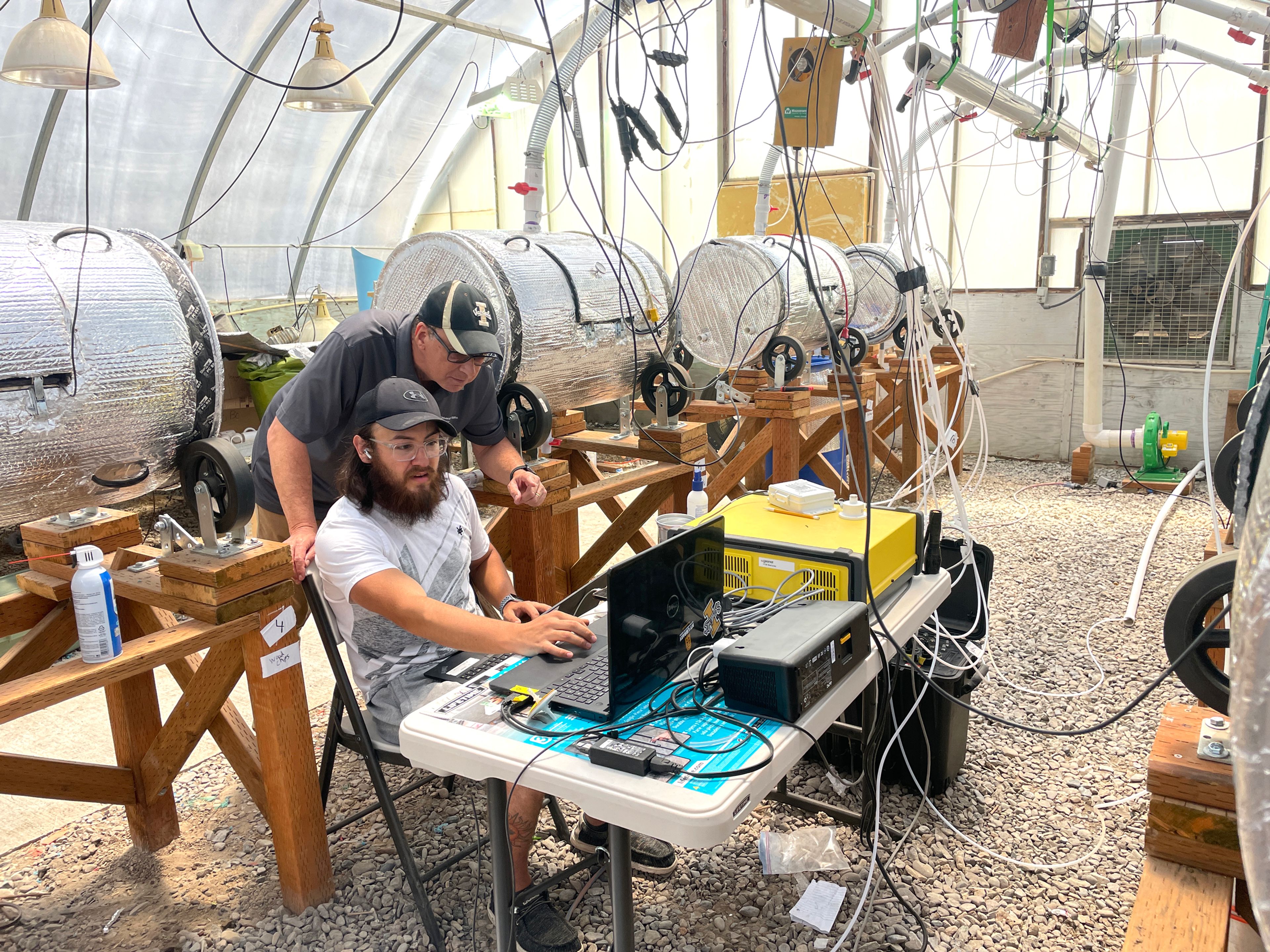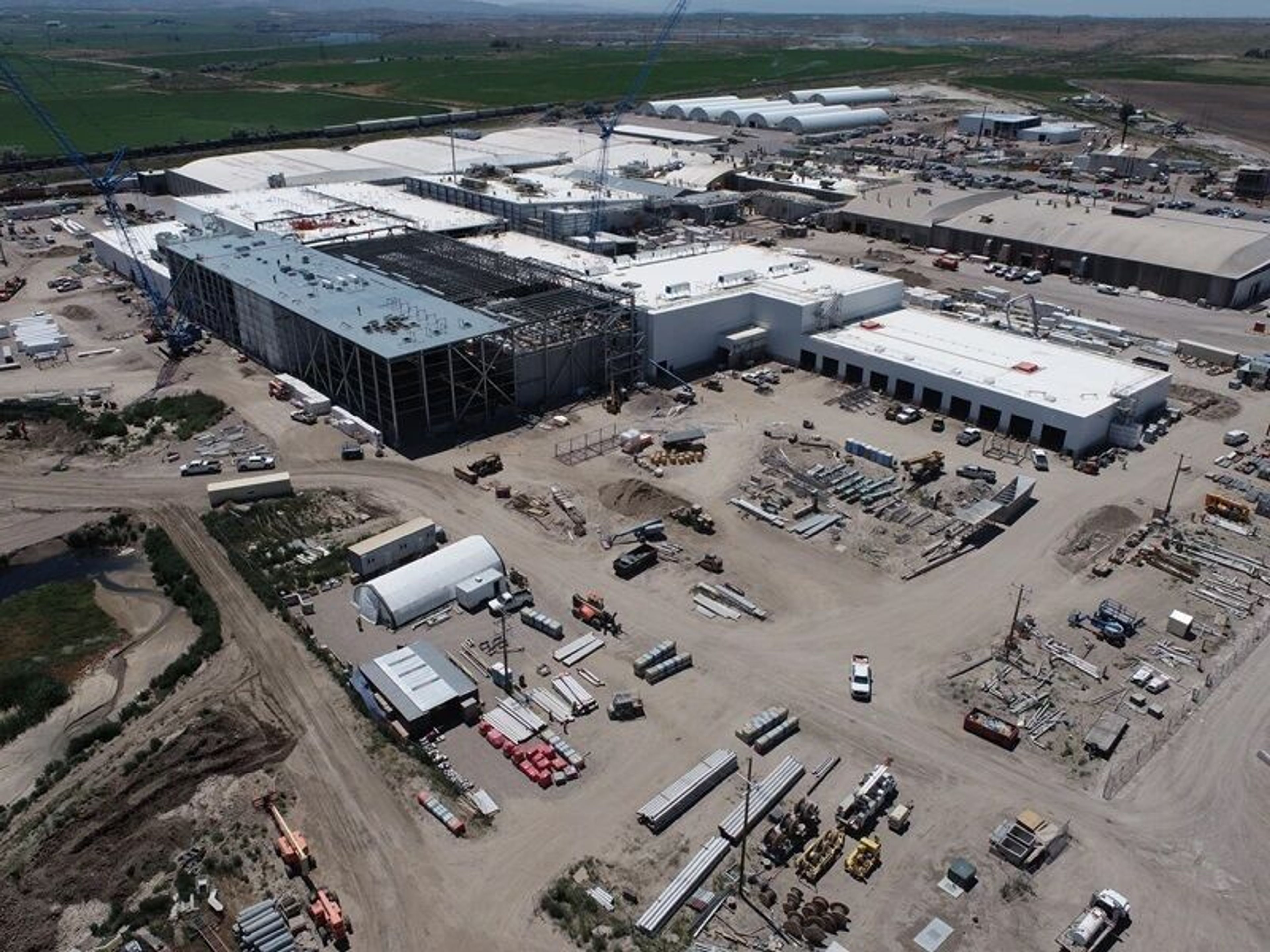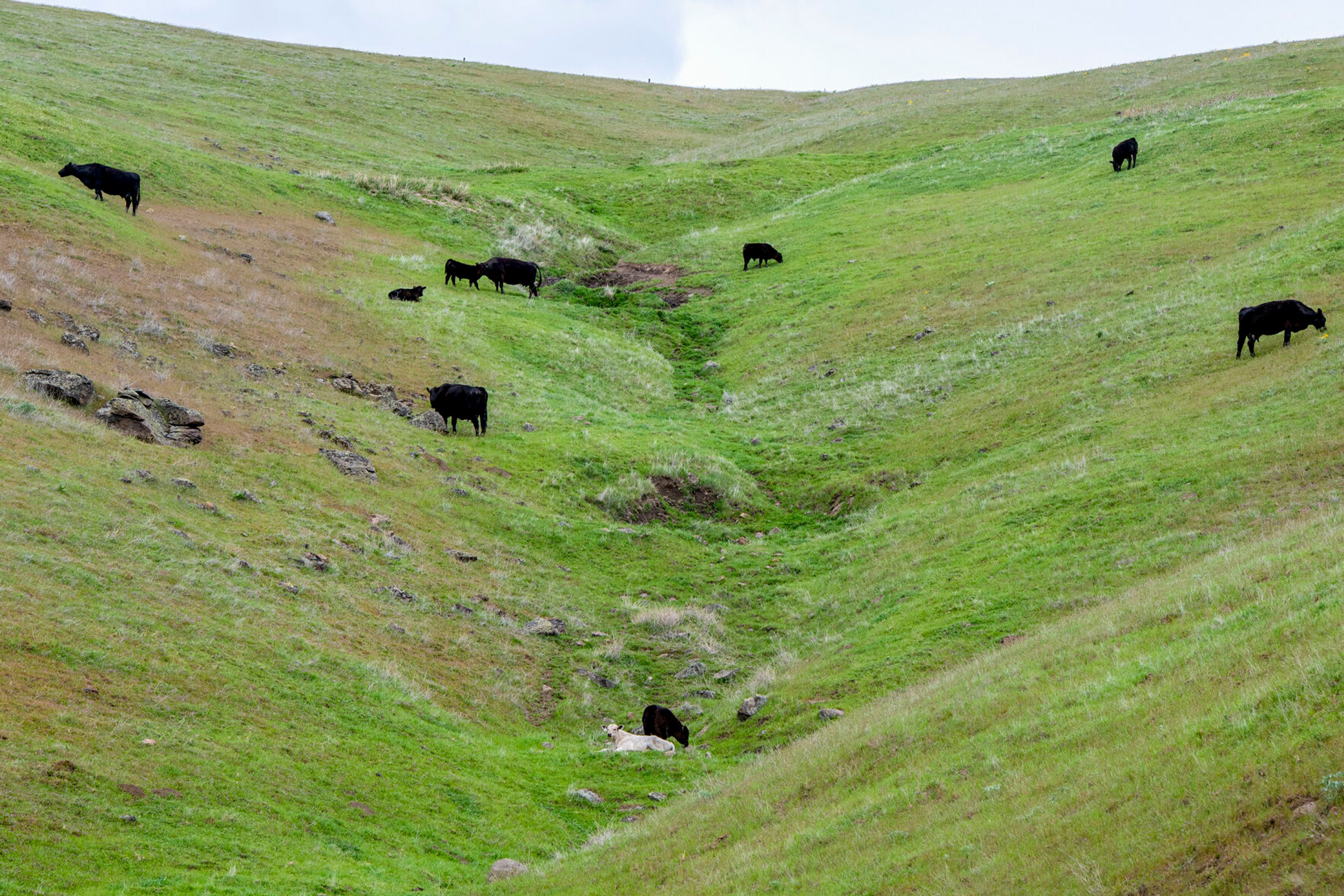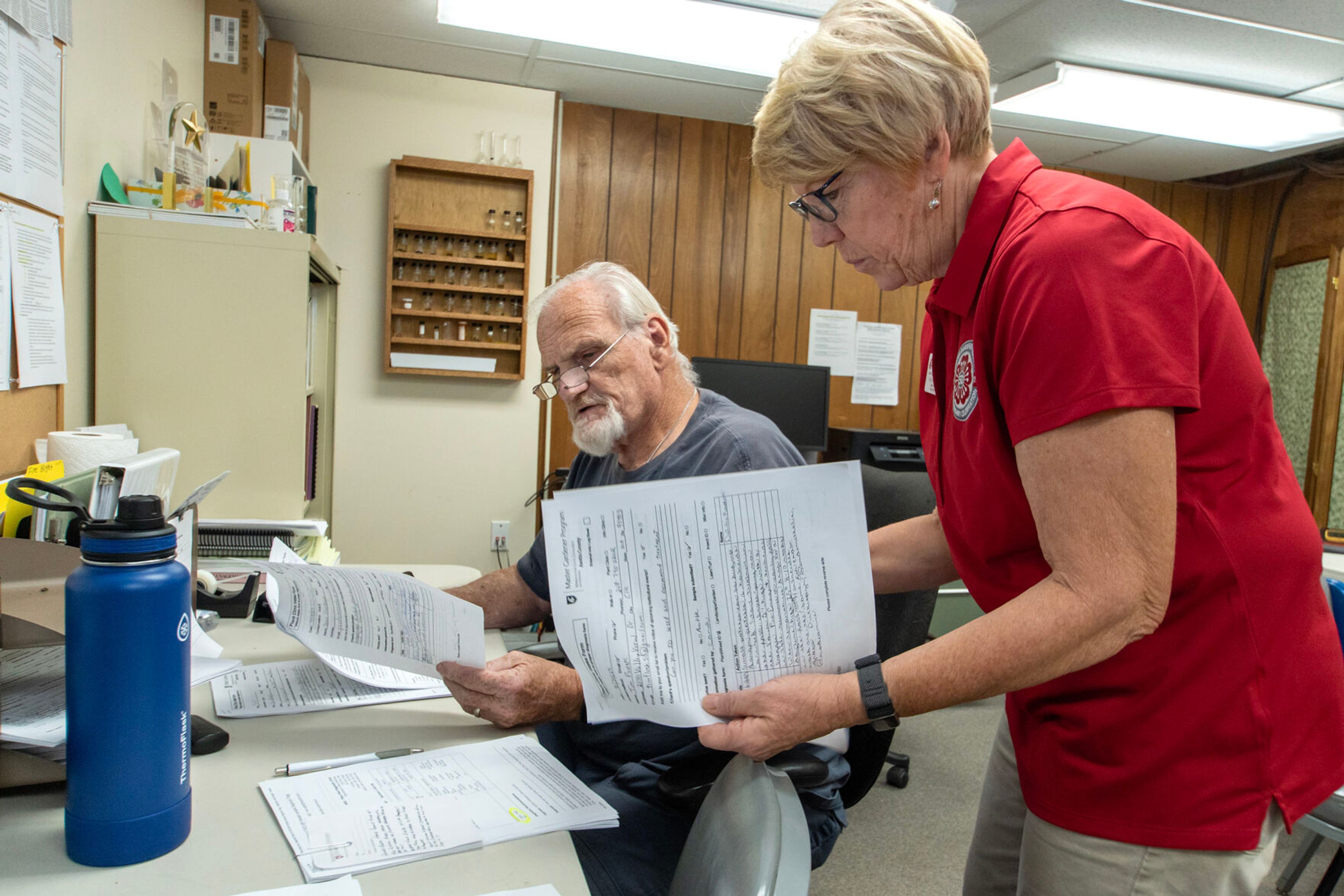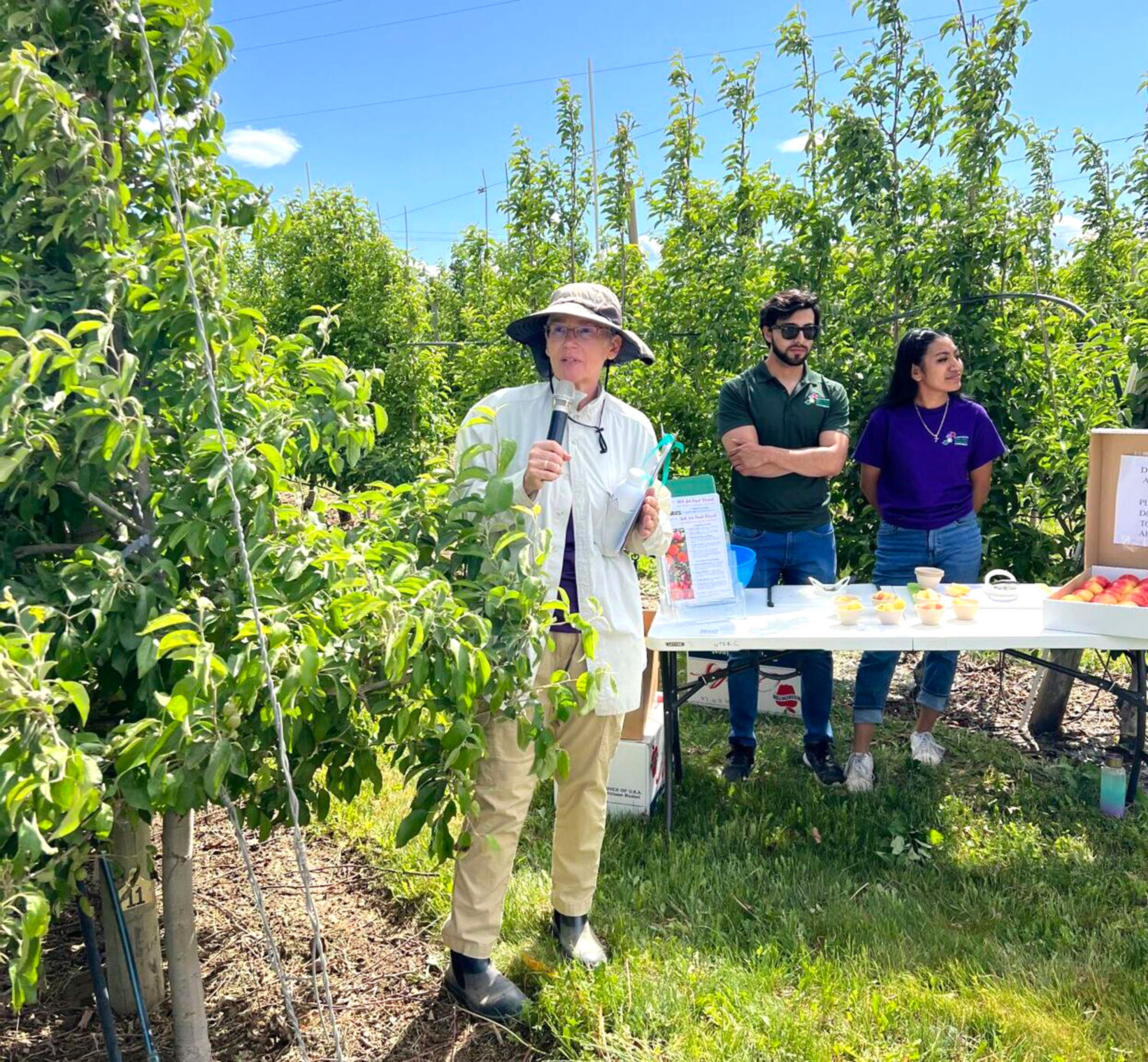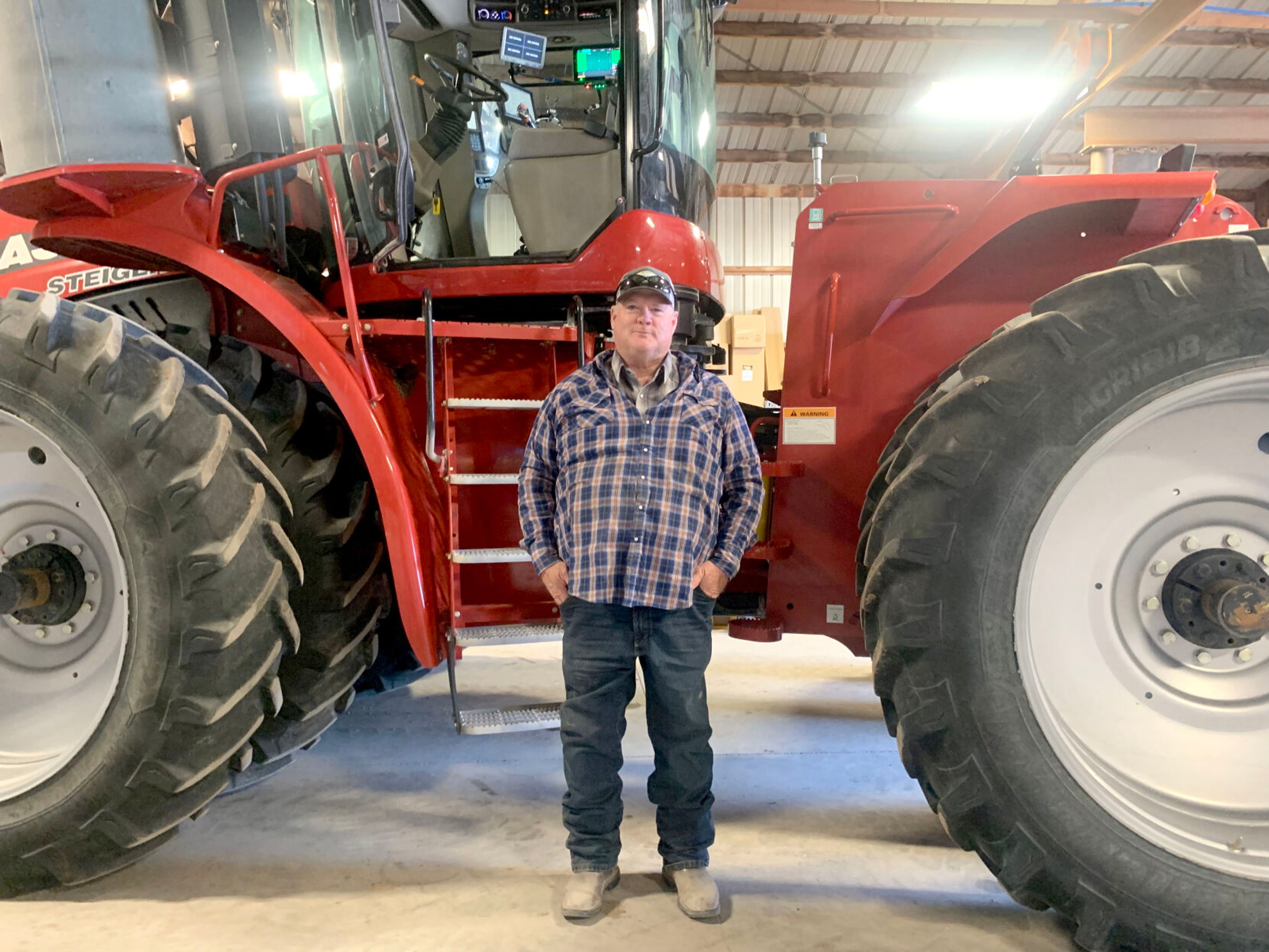A Cougar, Vandal collaboration
WSU grad student, UI educator team up on manure-to-compost project
A Washington State University graduate student and a University of Idaho Extension educator have teamed up to help Idaho dairy producers cash in on cow manure by amending it to make better compost.
Anthony Simerlink, a Washington State University master’s student studying agriculture, and UI Extension Educator Mario de Haro-Martí are working on a four-year, $600,000 research project funded by the U.S. Department of Agriculture that aims to develop useful bioproducts from dairy waste. The project is housed at the UI Kimberly Research and Extension Center in southern Idaho.
Manure is bulky and tough to transport, which can lead to its overapplication in fields surrounding dairies and contributes to environmental challenges. Converting manure into portable compost is common practice among Idaho dairymen. Dairymen seldom add supplemental carbon, however, aside from straw bedding, to optimize the important carbon-to-nitrogen ratio of their finished product.
Simerlink and de Haro-Marti are exploring carbon or mineral amendments that would help dairy producers develop a marketable product that meets the needs of landscapers, greenhouse and other industries that have traditionally shunned dairy compost for its lower quality and variability.
“We have all of these dairies, we have a lot of manure and we have an excess of nutrients if we apply them at the rate that they’re created,” Simerlink said. “This is just an idea to give these farmers another revenue stream and make it easier to compost.”
Carbon amendments they’re analyzing include woodchips and biochar, which is a lightweight and high-carbon form of charcoal that could potentially be made from dairy manure. They’re also evaluating blending manure with pumice or clinoptilolite — both volcanic minerals mined in Idaho.
The reactors are tied to a common exhaust system, containing sensors to measure how each amendment may contribute to reduced emissions of methane, carbon dioxide, ammonia and nitrous oxides by improving the balance of carbon and nitrogen. In past research, de Haro-Martí calculated an up to 25% reduction in ammonia emissions from compost amended with clinoptilolite.
“Reduction in ammonia is huge because it’s a local pollutant,” de Haro-Martí said. “It travels in the air and returns to water sources and the environment around the region, which increases nitrogen levels.”
The compost produced in their system will be used some time next year to grow crops in a greenhouse. The top-performing amendments from the greenhouse trial will be used in making compost on a larger scale with a standard compost turner. They’ll apply that compost to plots in Kimberly in 2025. n
